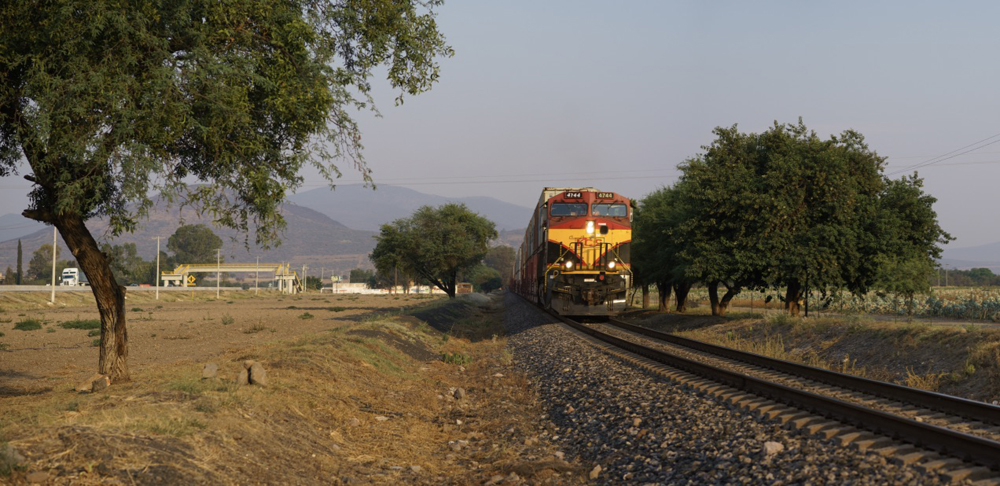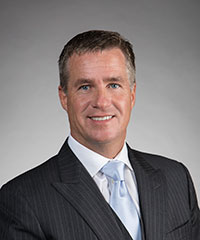
Canadian Pacific Kansas City expects to see continued international and cross-border intermodal growth across its network thanks to a combination of ample port capacity and the railway’s ability to tap new markets, CEO Keith Creel says.
On the international side, the ports of Vancouver, British Columbia; Saint John, New Brunswick; and Lazaro Cardenas, Mexico, each offer distinct advantages and have capacity expansion projects in the works as global trade patterns shift. “You put all three of those together with this tri-coastal network, I think that sets us up again for continued growth,” Creel told an investor conference today.

Vancouver container volume came roaring back this year after suffering a downturn in the wake of last summer’s dockworker strike. Saint John is seeing flat volume so far this year after a record 2023. But Creel says the port has a competitive advantage over Canadian National-served Halifax, Nova Scotia, because it’s closer to the key markets of Montreal, Toronto, and Chicago.
Lazaro Cardenas, meanwhile, has an automated terminal that’s running at half capacity right now. Creel says CPKC and its steamship-line partners aim to make the port an alternative to Los Angeles and Long Beach, Calif., for imports bound for Texas.
Creel likens Lazaro to the CN-served Port of Prince Rupert, British Columbia, which has served as an alternative to the much larger Port of Vancouver. Just like Rupert will never replace Vancouver, Lazaro will never replace Los Angeles and Long Beach, he says.
Service from Lazaro is ramping up now, Creel says, but CPKC expects to make a big splash in the next three years with the launch of a daily pair of 10,000-foot stack trains that will serve the port on Mexico’s Pacific coast. “It’s going to take two to three years. It’s going to take a little time to build it up,” Creel says of the $200 million opportunity.
Once those trains are up and running, Creel expects it will take another two years for the railway to add a second train pair. “The potential is huge,” Creel says.
CPKC’s international intermodal will benefit from the new Gemini alliance that links two of its largest customers, Hapag-Lloyd and Maersk, Creel says. The like-minded steamship lines will begin cooperating under the new agreement next year.
Overall, domestic intermodal remains challenged due to ample truck capacity that has driven down rates and made it tough for rail to compete, Creel says.
But CPKC’s Mexico Midwest Express cross-border service continues to grow. Volume was up 10% in each of the past two months, Creel says.
The service will get a boost from two unrelated events: the construction of an Americold refrigerated warehouse at CPKC’s terminal in Kansas City and the anticipated regulatory approval of the CPKC and CSX acquisition and operation of Genesee & Wyoming short line Meridian & Bigbee, which will create a new intermodal route linking the U.S. Southeast with Texas and Mexico.
Americold broke ground on its new facility last month. It will open next year and allow CPKC’s customers to ship beef and pork produced around Kansas City to be exported to Mexico. Northbound, the service will carry Mexican-grown frozen vegetables to destinations in the Midwest as well as Toronto, Creel says. All of this volume moves by truck today.
Schneider, which uses both CPKC and CSX, is excited about the new route that will allow it to launch intermodal service between the Southeast and Mexico, Creel says. CPKC expects the Surface Transportation Board to issue a decision on the Meridian & Bigbee deal in the next six weeks. Assuming STB approval, CPKC and CSX aim to launch service in late summer, Creel says.
To ease a half-dozen bottlenecks on CPKC de Mexico, the railway has launched $70 million (U.S.) worth of capacity expansion projects in Mexico that were not originally envisioned as part of the CP-KCS merger, Creel says.
The new capacity will further improve train speeds and car velocity in Mexico, which had lagged after the merger, Creel notes.
The projects, which will come online late this year and early in 2025, will unlock capacity. “It’s truly the big growth engine,” Creel says of Mexico.
The CPKC merger has prompted the creation of new partnerships between other railroads, including the CN-Union Pacific-Ferromex Falcon Premium intermodal service, CN-Norfolk Southern intermodal service linking Canada with Kansas City and Atlanta, and BNSF/J.B. Hunt cross-border intermodal service with Ferromex.
Now CPKC may get into the partnership act using the CP-UP Kingsgate British Columbia-Eastport, Idaho, gateway that has long carried agricultural traffic.
“Today I look at it and I’m thinking ‘Wait a second. What could we do uniquely selling merchandise service, chemical service out of the Edmonton corridor, going into the I-5 corridor?’ Is our line with the right investment a competitive alternative to CN and BNSF? The answer is yes,” Creel says. “The route is actually shorter. Now it requires investment, it requires two motivated companies. But the will and the opportunity is there and it makes good sense.”
Creel spoke at the RBC Capital Markets Canadian Industrials Conference.














We haven’t heard much progress of the take over of M&B.
STB hearing isn’t until November 3, 2024.
My bad, the initial hearing was November 3, 2023 (!)
Unless something happens in Congress, the California 2035 mandate on rail will be the biggest boon to CPKC and CN. Asian traffic via Long Beach will look for a less expensive route as the mandated fuel tax hikes (50 cents in July and every 6 months after) is going to force commerce to seek out less resistance in pricing.
BNSF and UP, as hard as they will try to meet 2035 mandates (either physically or by courts), are land locked and will be hard pressed to get alternate port business without investing in a non-green port.
Still no large push to get Mexican made merchandise to Canada.